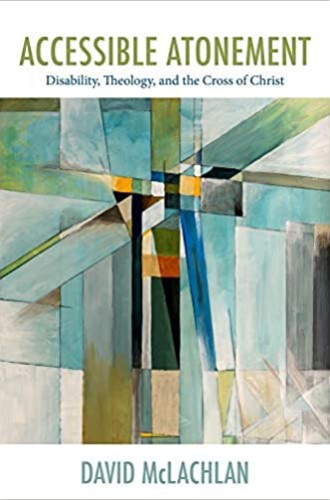What does the cross mean for people with disabilities?
David McLachlan proposes a participatory atonement in which God engages creation’s contingency and vulnerability.
Many volumes have been published in the last decade that explore the theological implications of the lives and experiences of people with disabilities and their caregivers. These books typically include some combination of memoir, biblical exegesis, and theological reflection. Often, they advocate for reformulations of Christian doctrines and practices to make them inclusive and accessible to people with disabilities.
David McLachlan casts Accessible Atonement differently. The book arose from his pastoral work with young people with epilepsy, and its central argument is that Christian doctrine should be formulated from the outset to include people with disabilities. He contrasts this methodology with what he claims is the common practice of “bending” traditional formulations of doctrine to make them more inclusive.
Read our latest issue or browse back issues.
Theologians of disability have reformulated some doctrines, McLachlan notes, including the significance of Jesus’ scars after the resurrection and the relationship between faith and healing. Some biblical studies have recast hermeneutics through the lens of disability. But thus far, he writes, theologians of disability haven’t engaged deeply with the notion of atonement or the meaning of the cross. He suspects this may be in part because atonement has long been associated with sin. Many theologians attempt to disassociate disability and sin, whether on biblical and theological grounds or based on social and scientific understandings.
This book constructs an account of the atoning work of the cross that at its origin includes people with disabilities of various types. McLachlan argues that this is an important task for theological reflection on disability. Jesus’ own experience of bodily frailty and vulnerability—culminating in his being disabled to the point of death through the process of passion and crucifixion—emerges accordingly as a revelation of God’s identification and solidarity with all of humanity and humanity’s impairments.
McLachlan’s review of writing on theology and disability shows that it has typically focused on the subjective effects of Jesus’ passion rather than on the objective reality of atonement. To remedy this gap, McLachlan begins with classic Christian models of atonement. He outlines a penal substitutionary model associated with Anselm, which claims that Christ was the sinless victim whose death paid the debt humanity owed to God on account of our sin. He also explicates a moral influence model associated with Abelard. According to this theory, God became human in the person of Jesus and was willing to die a painful death for our sake—and our knowledge of that reality helps us change our behavior toward other human beings.
McLachlan argues that these two accounts are not in competition, as some theologians have claimed. Rather, they each point to aspects of the cross. As a result, McLachlan proposes what he calls a “protocol” for understanding the atonement. This is not a model that claims to understand the work of the cross; rather, it is an understanding that should be applied to any proposed model. Central to McLachlan’s protocol is the notion of “atonement as participation,” whereby God participates in creation’s contingency and vulnerability—of which disability is a part. God’s work of participation in creation necessarily includes disabled people because they are created.
By focusing on vulnerability and contingency, the book manages to move away from the notion that disability is somehow the result of sin, either individual or corporate. Rather than being signs of humanity’s fall in Adam, people with disabilities are simply part of God’s creation—a creation in which human beings exist with different forms and different abilities. McLachlan’s protocol also allows for the argument that the resurrection of the body might entail something other than the complete healing of disability.
McLachlan subtly navigates several tensions that might arise from various readings of the model that he proposes. For instance, while he affirms that God has entered creation and is affected by it, he denies that the divine being actually suffered, thus avoiding what classical theology called the patripassianist heresy. It is not our worth or ability that God makes known on the cross, according to McLachlan. Rather, the cross is a sign of God’s relationship to all of humanity. It is based on God’s initiative rather than our response, which solves the question of whether assent to salvation or confessed faith in Christ are necessary for salvation.
McLachlan’s book is theologically sophisticated and pastorally sensitive. But I longed for deeper engagement with the notion that it is not the cross but the resurrection that signals God’s deepest involvement with humanity. It can be argued that the crucifixion is what humans do to Jesus, while the resurrection is God’s response to that death.
Not every reader will agree with all of McLachlan’s constructive proposal, although I found most of it convincing. More importantly, he reminds those who reflect on theology and disability that they cannot avoid giving an account of the significance of God’s work on the cross. By including disabled people within the sphere of God’s intended creation, he places them clearly among the people of God—all of whom await transformation by God’s work in this life and in the life to come.






